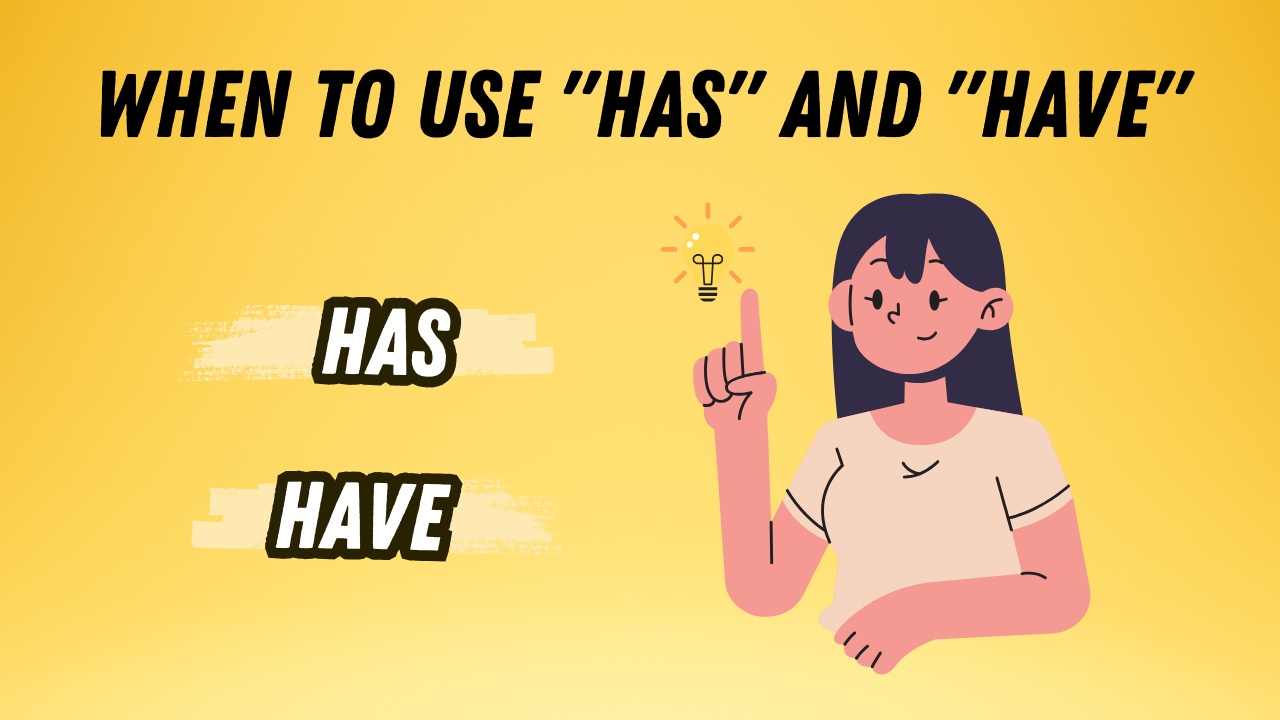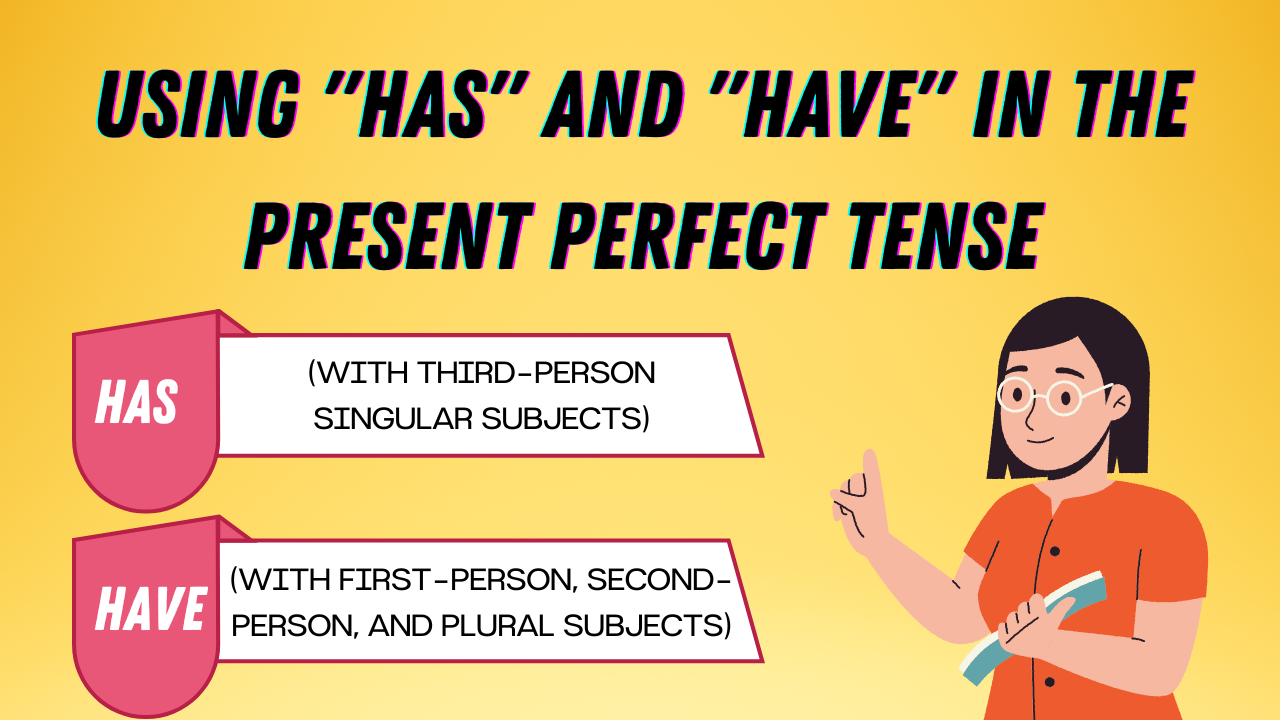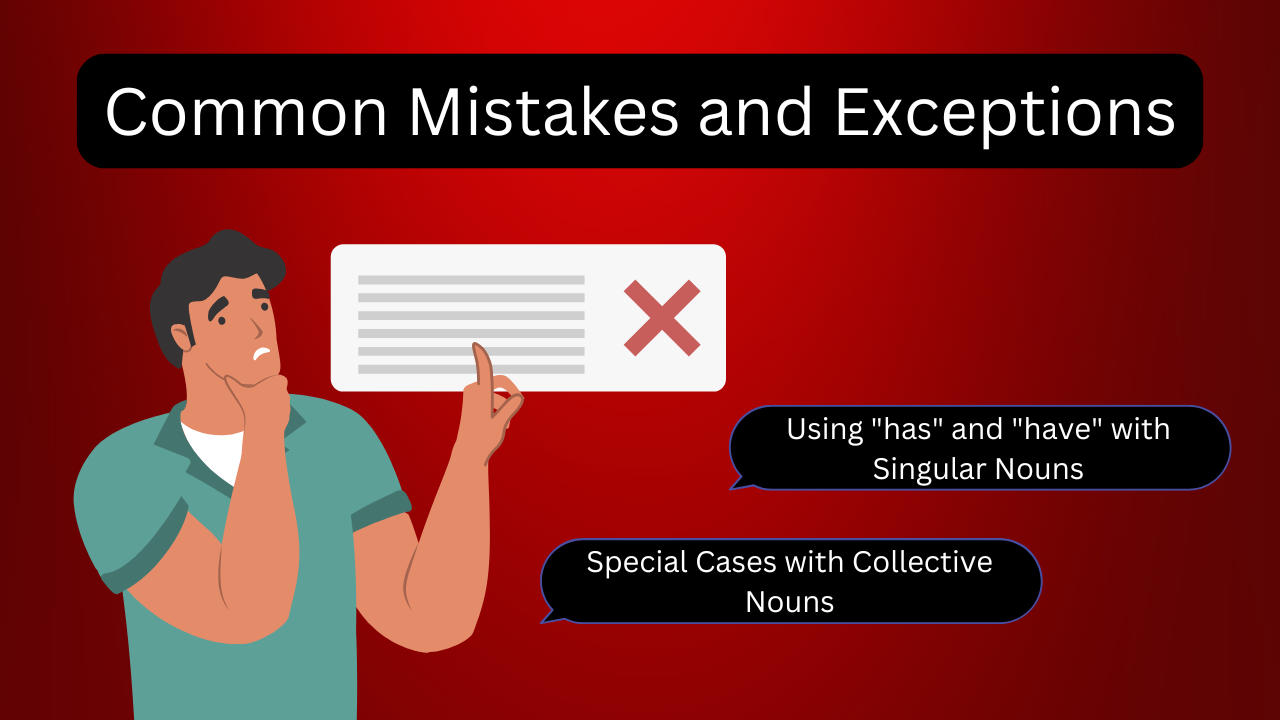English grammar can get confusing, especially when it comes to picking the right verbs. One area where people often get stuck is with the words “has” and “have.” These two words seem alike, but they are used differently depending on the sentence. In this guide, we’ll break down when to use “has” and “have” with simple examples. By the end, you’ll be able to use these words with confidence.
What are “Has” and “Have”?
“Has” and “have” are both forms of the verb “to have.” They show ownership or a need for something. You also see them in some grammar structures like the present perfect tense.
You use “to have” for:
- Showing ownership (e.g., “She has a car.”)
- Describing relationships (e.g., “They have two children.”)
- Creating compound verbs (e.g., “I have finished my homework.”)
- Expressing need or obligation (e.g., “I have to go to the store.”)
The key to using them correctly comes down to who or what the sentence is talking about.
When to Use “Has” and “Have”

The main difference between “has” and “have” depends on the subject of the sentence. You need to make sure the verb matches the subject.
Subject-Verb Agreement
Subject-verb agreement means that the form of the verb must match the subject. Whether you use “has” or “have” depends on whether the subject is singular or plural.
Singular vs. Plural Subjects
-
Has: Use with singular subjects in the third person (he, she, it, or a singular noun).
-
Examples:
-
“He has a dog.”
-
“She has a beautiful garden.”
-
“The car has new tires.”
-
-
-
Have: Use with plural subjects (we, they, you) or with “I” and “you” in the singular form.
-
Examples:
-
“We have a meeting at 9 AM.”
-
“I have two brothers.”
-
“You have a nice house.”
-
-
First, Second, and Third Person
The verb changes depending on whether the subject is in the first, second, or third person.
-
First Person Singular and Plural (I, We): Use “have.”
-
Examples:
-
“I have a cat.”
-
“We have many friends.”
-
-
-
Second Person Singular and Plural (You): Use “have.”
-
Examples:
-
“You have a busy schedule.”
-
“You all have been very helpful.”
-
-
-
Third Person Singular (He, She, It): Use “has.”
-
Examples:
-
“He has a big house.”
-
“She has a new job.”
-
“It has been raining all day.”
-
-
-
Third Person Plural (They): Use “have.”
-
Examples:
-
“They have a lot of homework.”
-
“The students have completed their assignments.”
-
-
Using “Has” and “Have” in the Present Perfect Tense

Aside from showing ownership, “has” and “have” also appear in the present perfect tense. This tense describes something that happened in the past but still matters now.
To form the present perfect tense, use “has” or “have” with the past participle of the main verb.
Examples:
-
Has (with third-person singular subjects):
-
“She has visited Paris several times.”
-
“The dog has eaten its food.”
-
-
Have (with first-person, second-person, and plural subjects):
-
“I have finished my homework.”
-
“They have traveled to many countries.”
-
Here, “has” or “have” is a helping verb, and the main verb shows the action.
Also Read: Weird Words In English: 80+ Must-Know Terms For Vocabulary Enthusiasts
“Has” and “Have” as Helping Verbs
“Has” and “have” also act as helping verbs. They team up with the main verb to form different tenses like the present perfect, past perfect, or future perfect.
Present Perfect Examples:
- “He has finished his dinner.”
- “We have already seen that movie.”
Past Perfect Examples:
-
“She had left the party before I arrived.” (Note: In past perfect tense, use “had” instead of “has” or “have.”)
Future Perfect Examples:
-
“By the time you arrive, I will have finished the report.”
In all these examples, “has” or “have” works with the main verb to form a compound verb tense.
Using “has” and “have” with Singular Nouns
Understanding how to use ‘has’ and ‘have’ with singular nouns can be tricky, mainly because of some common mistakes and exceptions. Here’s an easy guide: use ‘has’ with third-person singular nouns and pronouns like ‘he,’ ‘she,’ and ‘it.’ On the other hand, use ‘have’ when you’re talking about yourself or directly to someone else, as in ‘I’ or ‘you.’ This rule also applies to both singular and plural nouns when they’re part of a compound subject.
A typical error is using ‘have’ with third-person singular nouns. For example, some might say ‘The team has won.’ Even though ‘team’ sounds like it’s more than one person, it’s actually a singular noun and should use ‘has’ in formal American English. This is unless we’re talking about special cases with collective nouns.
Special Cases with Collective Nouns
Collective nouns like ‘team,’ ‘family,’ or ‘company’ usually take a singular verb. For example, we say ‘The team has won its last game’ when the group acts as one. But sometimes, using a plural verb makes sense. If you’re talking about individual actions within the group, a plural verb fits better. Like in ‘The team have washed their own jerseys.’
This shows it’s important to think about whether you’re referring to the group as a whole or to individual members when choosing the right verb.
Also Read: Master English Filler Words: To Conquer Awkward Silences
Practical Examples
Examples of “have” in sentences
Let’s look at how the verb ‘have’ is used all the time in English. Take the sentence ‘I have two sisters and a brother.’ This is a straightforward way of showing possession.
Then there’s ‘We have completed our report.’ Here, ‘have’ helps indicate that an action is done, working as an auxiliary verb in the present perfect tense.
What about asking questions like ‘Do you have any questions?’ In this case, ‘have’ helps ask if something exists or is present.
Lastly, in ‘They have been to Europe twice,’ the word ‘have’ serves as an auxiliary again, but this time it’s helping to talk about experiences that happened over an unspecified period.
These examples show how ‘have’ can be used in different ways, making it a very flexible part of English grammar. Let’s keep going and see what else we can uncover about this handy verb.
Examples of “has” in sentences
Let’s talk about how we use ‘has’ in different sentences.
For example, if we say ‘She has a deep understanding of the subject,’ we’re showing that she owns that knowledge.
When we say, ‘The committee has decided to postpone the meeting,’ it means the committee already made that decision.
And in ‘It has been raining since morning,’ ‘has’ helps us say that the rain started earlier and is still going.
So, ‘has’ can show ownership, actions that are finished, or things that are still happening.
It’s really versatile, isn’t it?
Conclusion
To wrap it up, it’s really important to know how to use ‘have’ and ‘has’ correctly if you want to communicate well in English. These verbs are key for making sentences in the present tense. They follow certain rules about whether you should use them with a single thing or person (that’s ‘has’) or more than one (that’s ‘have’).
By getting familiar with these rules and practicing them, you can make your writing and speaking much clearer. Keep looking at examples and watch out for the tricky exceptions to make sure you’re using these verbs right, whether you’re talking or writing. Keep visiting the Translation Blog for more informative articles like this.


